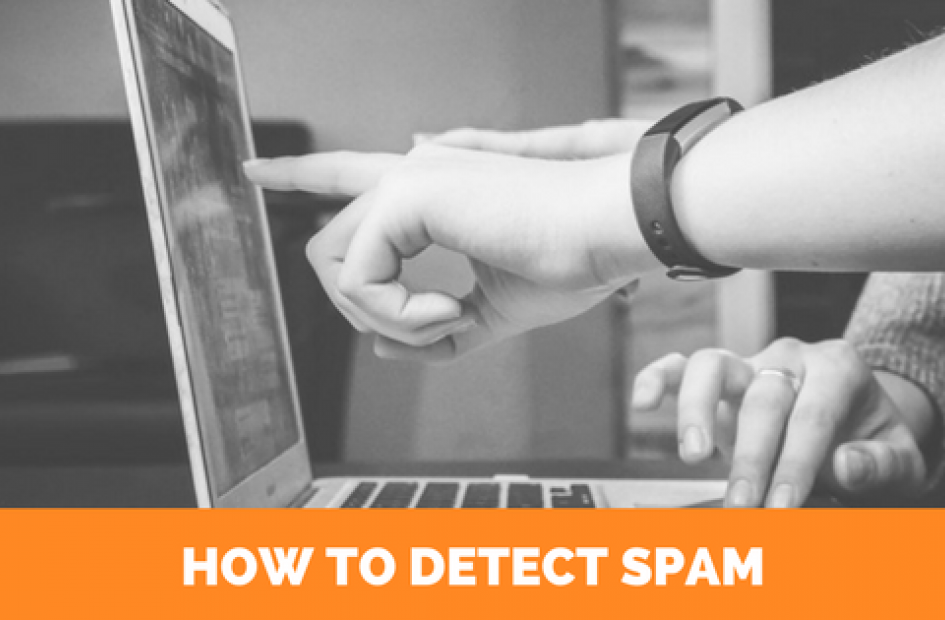News & Blog

9 Tips on How to Identify a Spam Email?
So, what exactly is spam? Spam email is useful because email is a very costless medium for the sender and it is a form of advertising.
At present, more than 95% of email messages sent worldwide is believed to be spam. Apart from the amount of junk arriving in their inboxes it can have a more indirect and severe effect on email services and their users. It is something that is unpleasant but also unavoidable. Spam poses a security risk when phishing or malware attacks come along with it. Since spam comes in varieties, it can easily manipulate the recipient. Thus, it is necessary to bear the following tips in mind, to identify spam.
1. Use Anti-Spam and Anti-Virus softwares
Once you install an Anti-Spam software, you can protect yourself from spam emails. This is a software that not only tags emails as spam but also blocks dangerous malware, virus and phishing attacks.
2. Ensure that you know the sender before opening an email
Avoid any email sent by a website that you don’t recognise or an email address from someone you don’t know. There’s a good chance that it is spam. Another possible way to identify a spam is when the sender's address has a bunch of numbers or a domain that you don't recognise (the part after the "@") then the email is likely spam. Hence, be careful while opening emails especially if they land in the spam box.
3. Identify spoof email address
Attackers who want to try phishing attacks use spoof email addresses to trick the recipient. To show that the email address is from a recognisable source, the attackers may use characters which look like actual letters. The attackers could also create fake sender address from trustworthy organisations. E.g., they can send an email from "westtek@rixobalkangrill.co.uk" which sounds like the email has come directly from Westtek. However, legitimate emails from Westtek always end in @westtek.co.uk. Legitimate companies send emails that use your first and last name for personal salutation. Hence, the email is a spam if the salutation is addressed to vague "Valued Customer." Ensure that you check whether received emails have the complete contact address of the company.
4. Be careful about “Urgent” or “Threatening” language in the subject
A common phishing tactic is to evoke a sense of fear or urgency in emails. Attackers might write email subjects like your account has been suspended, or someone is trying to make unauthorised login attempts. Due to this, recipients get worried, and they land up opening the spam emails or links.
5. Check the subject for a spam alarm
Make sure you check the subject line before opening an email. The subject sounds exciting and persuades you generally by offering things like sales or investment opportunities, new treatments, requests for money, information on packages you never ordered, etc. Usually, it sounds like you are receiving a bag of million bucks for free. These emails are definite signs of spam for you to click links that result in attacks.
6. Avoid requests for personal information
Seldom a user is requested to "update user information," or sign in "immediately". If an attacker sends a request for personal information, then you know something’s not right. These emails contain anonymous links and it is advisable to avoid all such emails as far as possible. Legitimate businesses never ask for personal information like credit card details or passwords via email.
7. Look out for typo-logical mistakes
Attackers write spam in a way to get it past spam filters, i.e. by making typo-logical errors so that they will not be detected. For example, the spelling PayPal comes across as Paypal and this way we believe that it is a legitimate email. However, it is not. Hence, we should always check for spelling mistakes since trusted brands are very serious about their emails.
8. Spot unknown attachments or links
If you are not aware of the source, you should avoid downloading links or attachments. There is a possibility that if you download these links or attachments, virus or malware can enter your computer and destroy your data. Malicious files are mostly in the .docx format for zip format.
9. Watch out for content that is too good to be true
Sometimes there is a spam email where content is unbelievable like you will get a large sum of money if you download this link. These emails are phishing scams to get information from you. These emails come in various forms which encourage the recipient to provide personal information. Make sure you dodge such spam emails.
Spam is dangerous and can leave your data or computer vulnerable to cyber attacks. Stay alert, stay secure. You can be sure that you are safe by typing the link that the mail contains to validate/check the content it states rather than clicking on the link. You can also use third-party security sites to check the email for any virus or malware.
If you feel you have been compromised then run antivirus software to ensure that your computer is safe. Also, you can change your password that may be identical to another one. Don't hesitate to reach out for help. Play safe and have a secure online journey.
Comments